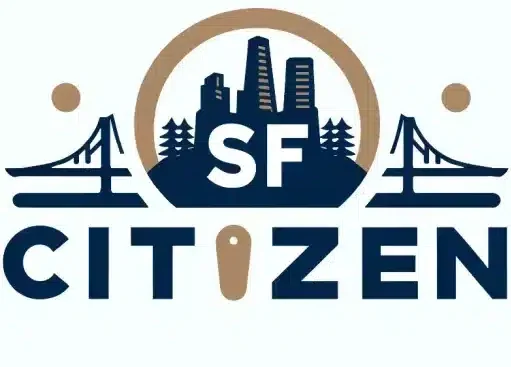San Francisco is at the forefront of the clean energy revolution, with a thriving ecosystem of renewable energy companies, research institutions, and policy initiatives. The city’s commitment to sustainability and innovation has created a dynamic landscape for energy professionals, offering diverse career opportunities across various sectors.
In This Article
Key Points
- San Francisco’s energy sector is driven by a focus on renewable energy, clean technologies, and data-driven solutions.
- The city’s regulatory framework and policy initiatives support the growth of clean energy careers and businesses.
- Energy professionals in San Francisco have the opportunity to make a significant impact on environmental sustainability and public health.
The Clean Energy Sector in San Francisco
Renewable Energy Analyst
Renewable Energy Analysts play a crucial role in San Francisco’s energy landscape, contributing to the development and implementation of clean energy projects. These professionals possess a strong understanding of renewable energy technologies, market trends, and policy frameworks. They analyze data, conduct feasibility studies, and provide recommendations to support the adoption of renewable energy solutions.
Environmental Markets Analyst
Environmental Markets Analysts are key players in San Francisco’s efforts to reduce carbon emissions and promote sustainable energy practices. They work at the intersection of financial modeling and environmental analysis, assessing the viability of carbon markets and renewable fuel projects. These analysts contribute to the development of emission control strategies and help shape the city’s environmental policies.
Energy Research and Development
Energy Research Jobs in San Francisco
San Francisco is home to a vibrant energy research community, with opportunities available at both private companies and public institutions. DTE Energy, for example, offers positions in energy systems analysis and technology development. Researchers in these roles contribute to the advancement of clean energy technologies, such as solar power, wind energy, and energy storage solutions.
Emerging Technologies and Energy Services
The energy sector in San Francisco is constantly evolving, driven by technological innovations and data-driven insights. Professionals in this field work on cutting-edge projects, such as smart grid systems, energy efficiency solutions, and advanced data analytics. They collaborate with cross-functional teams to develop and implement innovative energy services that benefit both businesses and consumers.
Regulatory and Policy Framework
Energy Policy and Public Utilities Commission
San Francisco’s energy policy landscape is shaped by the Public Utilities Commission, which regulates energy services and promotes clean energy initiatives. Energy professionals working in this domain contribute to the development and implementation of policies that support the city’s sustainability goals. They engage with stakeholders, analyze market trends, and provide recommendations to ensure a reliable and environmentally friendly energy supply.
Carbon Markets and Emission Control Technologies
Carbon markets play a significant role in San Francisco’s approach to emission control and environmental sustainability. Professionals in this field develop and manage emission control technologies, such as carbon capture and storage systems. They also engage in financial modeling and market analysis to assess the viability of carbon trading schemes and identify opportunities for emission reduction.
Urban Sustainability and Public Health
Urban Forestry and Arborist Technician Roles
Urban forestry is an essential component of San Francisco’s public health and environmental strategy. Arborist Technicians contribute to the maintenance and expansion of the city’s green spaces, which help mitigate the urban heat island effect, improve air quality, and enhance overall livability. These professionals work closely with energy utilities to promote tree planting programs that support energy conservation efforts.
Public Health Careers and Emergency Management
Energy sector careers in San Francisco have a direct impact on public health outcomes. Professionals in emergency management roles ensure the resilience and reliability of energy infrastructure during critical events. They develop contingency plans, coordinate with public health agencies, and implement strategies to minimize the impact of energy disruptions on communities.
Technology and Analysis in Energy Careers
Technology in the Energy Sector
Technology plays a transformative role in San Francisco’s energy sector, enabling the development of smart, efficient, and sustainable solutions. Energy professionals leverage advanced technologies, such as artificial intelligence, machine learning, and Internet of Things (IoT) devices, to optimize energy consumption, improve grid stability, and enhance customer experiences.
Financial Modeling and Data Analysis
Financial modeling and data analysis are critical skills in San Francisco’s energy sector. Professionals in this domain use sophisticated tools and techniques to assess the economic viability of energy projects, forecast market trends, and support data-driven decision-making. They collaborate with cross-functional teams to develop financial strategies that align with the city’s environmental and social goals.
FAQ
What qualifications are needed for a career in renewable energy analysis?
A career in renewable energy analysis typically requires a bachelor’s degree in a relevant field, such as engineering, environmental science, or economics. Professionals should possess strong analytical skills, proficiency in data analysis tools, and a deep understanding of renewable energy technologies and market dynamics.
How do environmental markets analysts impact San Francisco’s energy sector?
Environmental markets analysts play a crucial role in shaping San Francisco’s energy policies and promoting sustainable practices. They conduct market research, assess the viability of carbon trading schemes, and provide recommendations to support the city’s emission reduction goals. Their insights help drive investment in clean energy projects and technologies.
What are the emerging technologies in San Francisco’s energy services?
San Francisco’s energy services are being transformed by a range of innovative technologies, including smart grid systems, energy storage solutions, and advanced data analytics. These technologies enable more efficient energy management, improve grid resilience, and support the integration of renewable energy sources into the city’s energy mix.
How does urban forestry contribute to energy conservation?
Urban forestry plays a vital role in energy conservation by providing natural shading, reducing the urban heat island effect, and improving air quality. Trees planted strategically near buildings can help reduce cooling energy consumption during hot summer months, while also enhancing the aesthetic appeal of the city’s streets and parks.
What is the significance of financial modeling in the energy sector?
Financial modeling is essential for assessing the economic viability of energy projects, forecasting market trends, and supporting investment decisions. Energy professionals use financial models to evaluate the costs and benefits of different technologies, assess the impact of policy changes, and identify opportunities for optimization and cost savings.

